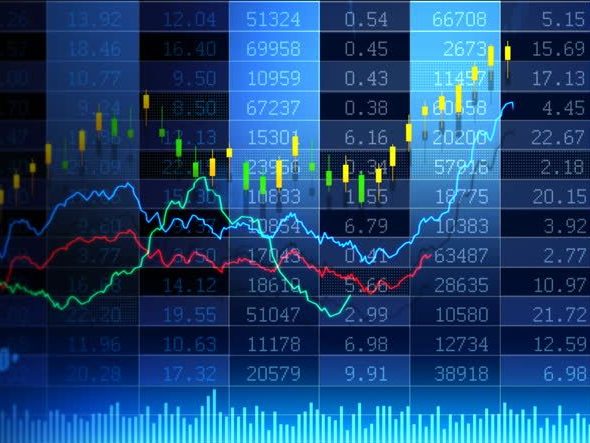
If you deal with steel, the word “hedging” is a magic spell to turn you off. “Thanks, but this is not for us.”
We know because we’ve been in your shoes. Time and again we were battered by a pricing roller coaster when trading and financing steel. We tried to do something about it but couldn’t find practical solutions.
Then a simple question came up one day: “Risk management depends on financial intermediation. Why?”
This got us thinking and talking to our peers. The more we reflected on their feedback, the more we saw the limitations of finance for steel pricing but also the opportunity to overcome these limitations.

Definitions
First, let’s agree on definitions because hedging is often confused with speculation. This is not surprising given the rise of financialization and misnomers like “hedge funds”.
At its simplest, hedging means earnings management. A company’s earnings are exposed to market forces outside its control. Hedging allows to manage them proactively in line with long-term objectives.
Material-intensive industries highly depend on fluctuations of sale prices and raw material costs. Hedging reduces the effects of these fluctuations on the bottom line. Some people say they hedge by buying when the market is down and selling when the market is up. In reality, they speculate because intuition can only take us so far—and that is not far enough amid increasing uncertainty.
This is why your company may be already hedging foreign exchange and interest rate risks. Price risk is no different.

Key considerations
When margins are slim, lower-than-planned revenues or higher-than-budgeted costs may turn them negative. In theory, the opposite should also be true, and unexpected losses and profits should offset each other over time.
This doesn’t happen in efficient markets because the competition (not least the cost leaders mentioned below) tries winning your business and market share at every opportunity. Since price swings don’t offset each other, just “going with the flow” destroys value. If this weren’t true, savvy suppliers wouldn’t insist on spot pricing, depriving their customers of a possibility to buy steel in advance.
On the other side of the spectrum, your business may be profitable through the cycle. Why bother with hedging? Because investors and creditors punish companies for volatile earnings, which signal higher risk. These raise cost of capital, cost of debt and restrict loan agreements, clipping investment. They also erode enterprise value: a recent study of 4000 non-financial firms has found that a shift from the median volatility to the lower quartile increases it by 8%.
These are important considerations regardless of one’s position on the cost curve. But above all, hedging is part of a broader question of ferrous markets structure and pricing. Will they remain decentralized or move to commodity exchanges?

Existing solutions
For the industry, the concerns and inconvenience associated with financially intermediated hedging outweigh its benefits:
Standardization
Commodity derivatives require a high degree of standardization for trading—but steel is not a commodity. The complexity of our supply chain and regional idiosyncrasies hinder the development of financial futures with customization and liquidity required for risk management.
But what if . . .
- there were an instrument that could be customized across the product range, geographies, and currencies on the one hand, and be sufficiently standardized for trading on the other?
- suppliers and end-users were involved in developing such instruments?
Inconvenience
Understanding and trading financial derivatives is not an easy task, especially for SMEs and companies that never used them before. As derivative markets become more complex and regulated, they don’t take into account very different motives and risk profiles of suppliers, end-users and financial players.
But what if . . .
- price expectations (forward curves) were replaced with reliable physical market indicators?
- one could manage the entire supply chain, from raw materials to finished products, on the same platform?
- there were several ways to ensure settlements without straining financial resources?
Financialization
The more our economy is dominated by finance, the more financial intermediaries profit from market uncertainty and push related services and agenda.
In derivative markets hedgers and speculators have opposed interests in complexity and volatility. Damaging the former, they breed trading opportunities for the latter.
The last two decades have seen an unprecedented surge of financial speculation in exchange-traded commodities, which exceeded price hedging dozens-fold. The financial sector has become a prime source of revenue to leading commodity exchanges, which were in turn acquired by financial interests. These forces increasingly affect the ferrous complex, whose pricing is pushed to financial markets regardless of hedging needs and involvement in derivative trading.
In this new environment some suggest that increased volatility is a price to be paid for hedging instruments. This sounds like a prescription to cure a hangover with more alcohol instead of not drinking it. Small wonder that many in the industry resist derivatives, rightly worrying about losing control over ferrous pricing.
But what if . . .
- we could prevent such conflicts of interest and undue influence of financial markets?
Is speculation needed for liquidity? Some, but not most of it. Before the 2000s, commodity derivatives were mainly traded for commercial hedging and core liquidity always came from the real economy.
Contrary to financial framing, liquidity is the means and not the end.

Reframing
These considerations have led us to the conclusion that steel risk management should NOT depend on financial intermediation.
Only a few years ago such a statement may have seemed mere lunacy. Now we can leverage newly available technologies and business models for an all-around solution in commercial markets:
- A digital marketplace spanning the ferrous value chain, decentralized and powered by network effects;
- Modular forward contracts that easily integrate with supply agreements;
- Flexible post-trade processing based on hedgers’ preferences and risk profiles.
Meet SteelHedge—a forward pricing platform and ecosystem for steel and steelmaking raw materials.
Now is the best time to join it for free.

Liquidity
What are the benefits of decentralized markets?
Besides the price formation argument, a decentralized forward market may develop organically without economic shocks that jump-started the use of commodity derivatives in the past, or financial liquidity pumped in for its own sake at present. It may grow faster through network effects because existing market participants benefit by attracting new ones. Only when industrial engagement is assured, one could envisage financial participation for sustainable liquidity provision.
For a centralized market to function, buying and selling interests must be clearly expressed. At SteelHedge, they may float anonymously before gravitating to each other under hedgers’ instructions. Think of AI-powered algorithms that scan the market for trading opportunities and culminate in a “prefab” bilateral contract.

Join our cause
We exist because ferrous markets need more certainty, less complexity to invest, make and move things profitably in the long term.
Digital economy provides a sustainable way to MANAGE and REDUCE uncertainty and volatility in commercial markets—the way steel and steelmaking raw materials are traded today. It simplifies the process, lowers the cost and keeps price formation in the real economy.
Woody Allen once said that “eighty percent of success is showing up.” This holds especially true for networks and network effects: small actions add up to big results.
If you consider hedging or support our cause, join the platform as a user and/or stakeholder and shape your markets evolution. The demo is one click away.
SteelHedge Founders


Markets change
You may drive change instead of being driven by it



Markets change
You may drive change instead of being driven by it

